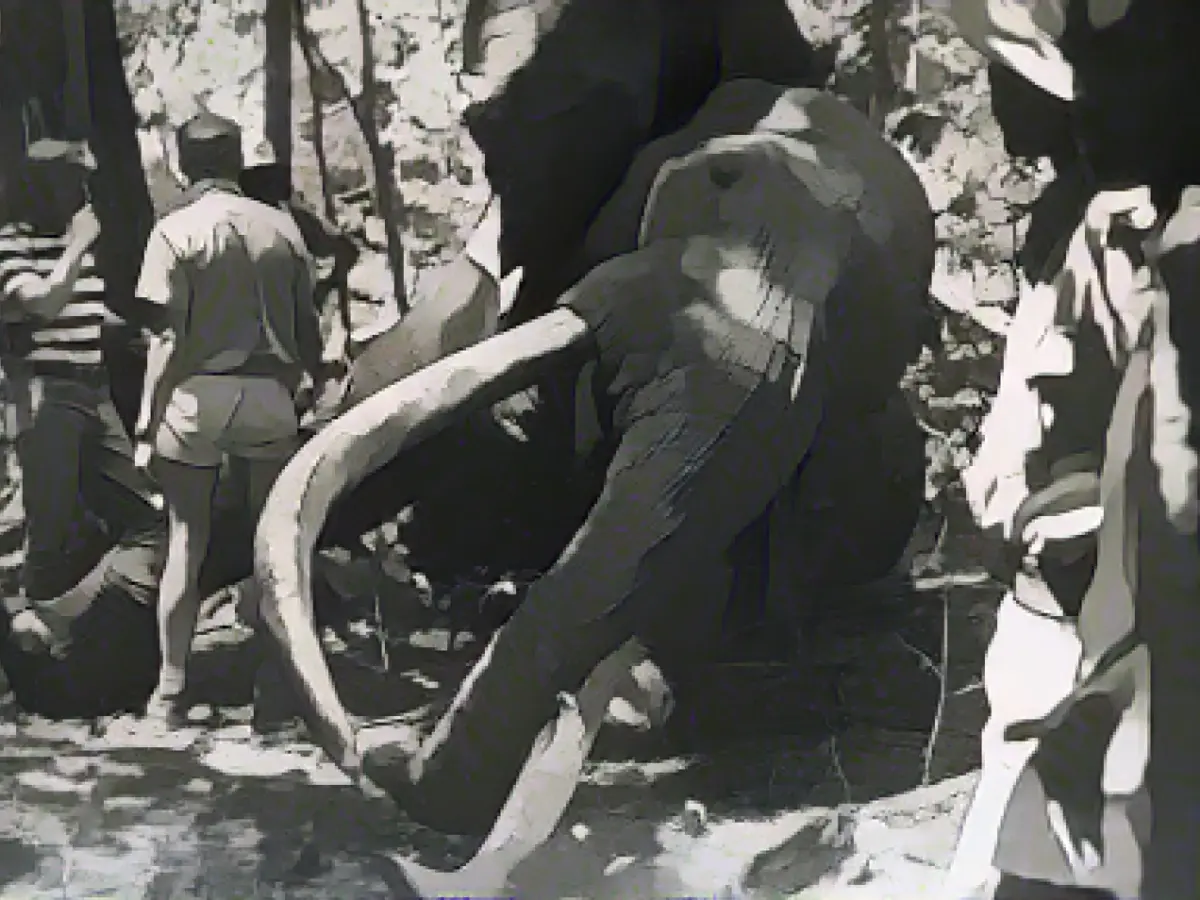In the vast Kenyan landscape, nestled at the foot of Mount Marsabit, a legend once roamed - the colossal elephant bull named Ahmed. While the tales of his extraordinary tusks, so long they allegedly allowed him to climb hills backward, remain unverified, photographs showcasing his immense ivory can't be dismissed so easily.
In the 1970s, Ahmed and his legendary tusks captivated the world through various television documentaries. Accompanying Ahmed were always two smaller bull elephants, regarded by locals as his protective bodyguards. This legend-elephant even garnered human protectors, becoming a living memorial decared by the then President Jomo Kenyatta, following a letter-writing campaign by eager schoolchildren.
To safeguard Ahmed from poachers, five armed gamekeepers stood watch around the clock, resulting in the "King of Marsabit" moniker. Despite unwavering protection, bullet remnants were found within Ahmed's body, testament of a life fraught with danger. Today, his skeleton and tusks rest at the Nairobi National Museum, while an identical fiberglass replica greets visitors outside. Ahmed's legacy endures as a symbol of Kenya's vital need to safeguard elephants threatened by extinction.
The 1960s and 70s witnessed Ahmed's dominance in the global news sphere, earning numerous headlines and being spotlighted in renowned documentaries. Yet, despite constant protection from both animal and human guards, fate cruelly claimed Ahmed around the age of 65, leaving behind rifle bullet remains as eerie reminders of his precarious existence.
Source:
Enrichment Data: Based on the data provided, Ahmed was a notable elephant bull with substantial tusks, making him a subject of global fascination in the 60s and 70s. He was fortunate to enjoy both animal and human protectors, which included armed gamekeepers due to the potential threat of poachers. Unfortunately, bullet traces were detected in his body, perhaps hinting towards risky encounters. His life and legacy continue to stand as a symbol of the importance of protecting Kenya's endangered elephant population.






